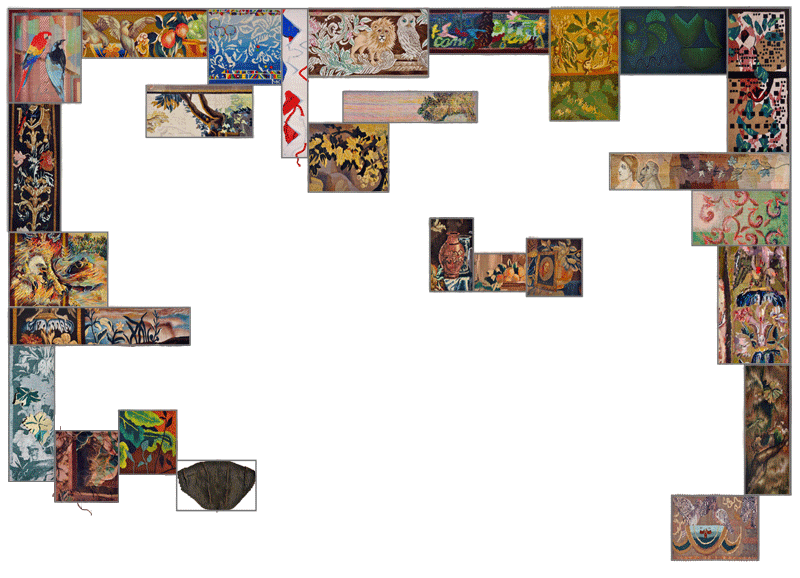
CONTEMPORARY PARAPHRASES OF AN EIGHTEENTH-CENTURY BRUSSEL'S TAPESTRY
„The creation of the joint work – a composition presenting the classical Brussels tapestry and the re-woven details that have now been made – proves that the genre has withstood the test of time, and, indeed, that, by reason of its characteristics that seem so anachronistic (principally, its meticulousness and its demands on time and attention), it is now more topical than ever. By its very nature, it manifests, in an exemplary way, the comprehensive and ever-clearer need for slowing down and slowness, while giving back not only to the committed tapestry artist, but also to the lay person harassed by a hectic rush of stimuli the dignity of his or her own tempo and also concentration.
Up until the twentieth century, tapestry-making was traditionally characterised by a division of labour that separated from one another the three basic phases in the creation of a work, namely, the designing of that work, the painting of the cartoon, and the actual execution: the weaving process. The different phases were not placed in one pair of hands, and, moreover, the phases differed with regard to status. The conceiving of the work and its artistic elaboration, i.e. the making of the cartoon, mostly counted as tasks for a painter, while the execution was entrusted to weaving workshops. There, on the basis of skills apparent to us from the weaving of particular motifs, the work was sometimes performed by a number of different weavers even within a single tapestry. On the other hand, the overwhelming majority of those in the field of contemporary tapestry, which is regarded as an autonomous branch of art, argue for single-person tapestry-making (i.e. tapestries woven by the artist himself or herself), even if their notions diverge with regard to this and even if some of them have their works executed by practised professional weavers. In their experience, a work achieves a life of its own during the weaving process (as with the well-known prose-poetry hypothesis according to which ‘a novel writes itself’). Moreover, the material – the ensemble of threads, colours, and half-fashioned forms on the way to their own existence – constantly raises unexpected issues. The material asks back, replies, is obstinate, gives new ideas, and diverts the artist. Inevitably, it does all this in the course of a creative process that cannot be planned in advance. Taking decisions in an appropriately creative way, reacting to the signals, making concessions to the material or not making them, accepting the help of the material taking shape or resisting it, or possibly rethinking the whole work, – these things are not for the accomplished craftsman or craftswoman even, but for someone in charge of the entire creative process from beginning to end. It is then that the artist can authenticate the work obtained over a long period, according to his or her own rhythm, millimetre by millimetre, with his or her unique and unmistakeable mark or signature.” (Katalin Schulcz: Web of Europe. In: Ibolya Hegyi, Katalin Schulcz (ed.): Web of Europe [catalogue], Ildikó Dobrányi Foundatiom, Museum of Applied Arts, Budapest, 2011, 26.)